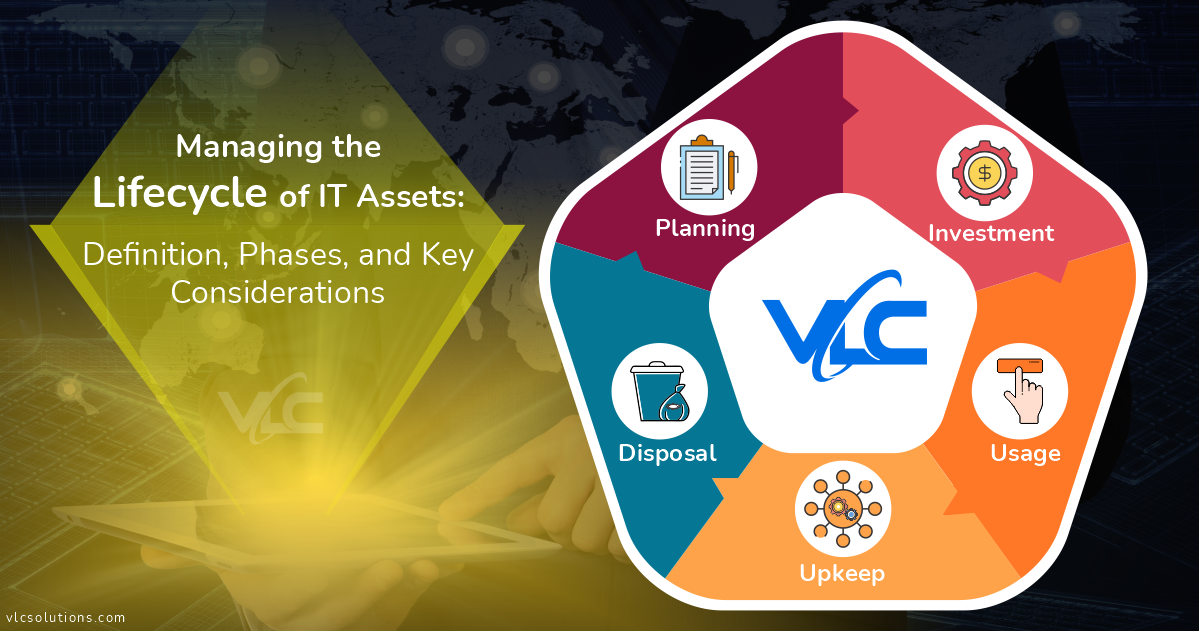Managing the Lifecycle of IT Assets: Definition, Phases, and Key Considerations
IT assets are the gears that fuel clients’ daily operations, contributing to productivity, efficiency, and innovation. They stand as the catalysts of business triumph, with servers or cloud resources as the protectors of mission-critical datasets, while networks incorporate seamless connections within various teams.
Effective IT asset lifecycle management is essential for ensuring client success and is pivotal in the core offerings. Implementing a robust lifecycle management approach enhances service delivery and cultivates trust.
Defining IT Lifecycle Management
IT asset lifecycle management is a well-established practice that ensures the delivery of successful services and customer satisfaction. It enables clients to derive maximum value from their technology investments by diligently monitoring all assets and performing necessary maintenance or replacements as they progress through each lifecycle stage. With IT asset lifecycle management, we can assist clients in optimizing costs and IT investments while also providing consistent and dependable services, improved security and compliance, and scalability.
Understanding the Stages of the IT Asset Lifecycle
Planning: Establishing a Solid Foundation
The planning stage lays the groundwork for effective and strategic IT asset management. It involves comprehensive assessments to understand the organization’s IT requirements and align them with business goals. Organizations can make informed decisions about technology investments by evaluating existing assets, identifying gaps, and creating a roadmap for asset acquisition and management.
We can provide valuable support by helping clients assess their current assets, identify inefficiencies, and recommend suitable solutions. Leveraging industry knowledge and vendor relationships, we can assist in negotiating contracts and obtaining the best pricing for asset procurement.
Investment: Building a Tailored Tech-stack
During the investment and acquisition stage, organizations make critical decisions about vendors, products, contracts, and procurement to build a tech stack that is in line with the business needs. We play a vital role by offering expertise and industry knowledge to help clients evaluate vendors, compare products, and make educated decisions. Streamlining the procurement process, recommending compatible asset configurations, and providing value-added services like asset tagging and documentation are additional ways to support clients. our assistance ensures clients acquire the right IT assets and optimize their procurement processes.
Usage: Active Utilization and Ongoing Maintenance
The use stage involves using and maintaining IT assets to support daily operations and achieve organizational objectives. We provide ongoing monitoring, maintenance, and support services to ensure the optimal performance and reliability of IT assets. Proactive approaches, such as promptly identifying and resolving potential issues, help minimize downtime and disruptions. Services like proactive maintenance, patching, help desks, troubleshooting, and disaster recovery ensure smooth operations and address user concerns related to IT assets.
Upkeep: Optimizing Asset Functionality
Regular maintenance in the IT asset lifecycle enhances asset functionality, addresses issues and vulnerabilities, and ensures assets meet business requirements. We offer comprehensive maintenance services, monitoring asset performance and identifying potential problems before they escalate. Automation opportunities can be leveraged to streamline maintenance tasks and prevent essential tasks from being overlooked.
Disposal: Secure and Environmentally-Friendly Asset Retirement
The disposal stage involves crucial activities such as data wiping, data destruction, asset decommissioning, and environmentally-friendly disposal methods. This stage is vital for safeguarding sensitive data, complying with data privacy and environmental regulations, and maintaining a solid reputation. We provide expertise in data wiping, secure data destruction, and asset decommissioning, ensuring the proper handling and elimination of sensitive information from retired assets. Adhering to industry best practices and data privacy regulations, MSPs manage logistics, offer reporting and certification, and protect client data while meeting compliance requirements.
Effectively managing IT assets at scale presents significant challenges, needing MSPs to adopt intelligent tools and automation solutions to maintain a competitive edge. With VLC’s Managed Services, you can effortlessly oversee your tech stack using a user-friendly interface while using automation to enhance efficiency and mitigate risks.
Experience first-hand the power of VLC’s Managed IT solutions through an expert and discover how we can elevate your tech stack to new heights. Talk to us today and discover the possibility of streamlined IT asset management.
